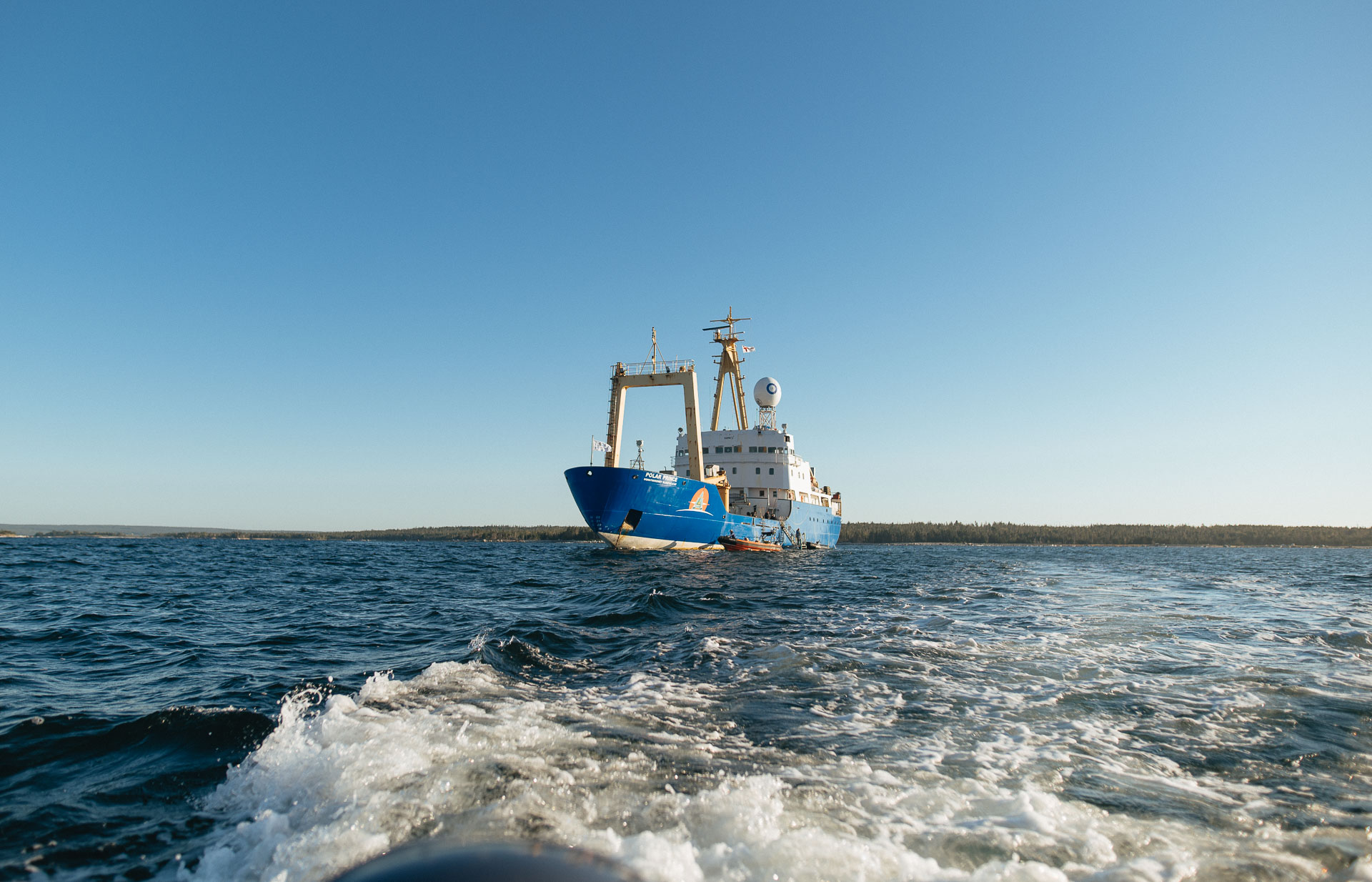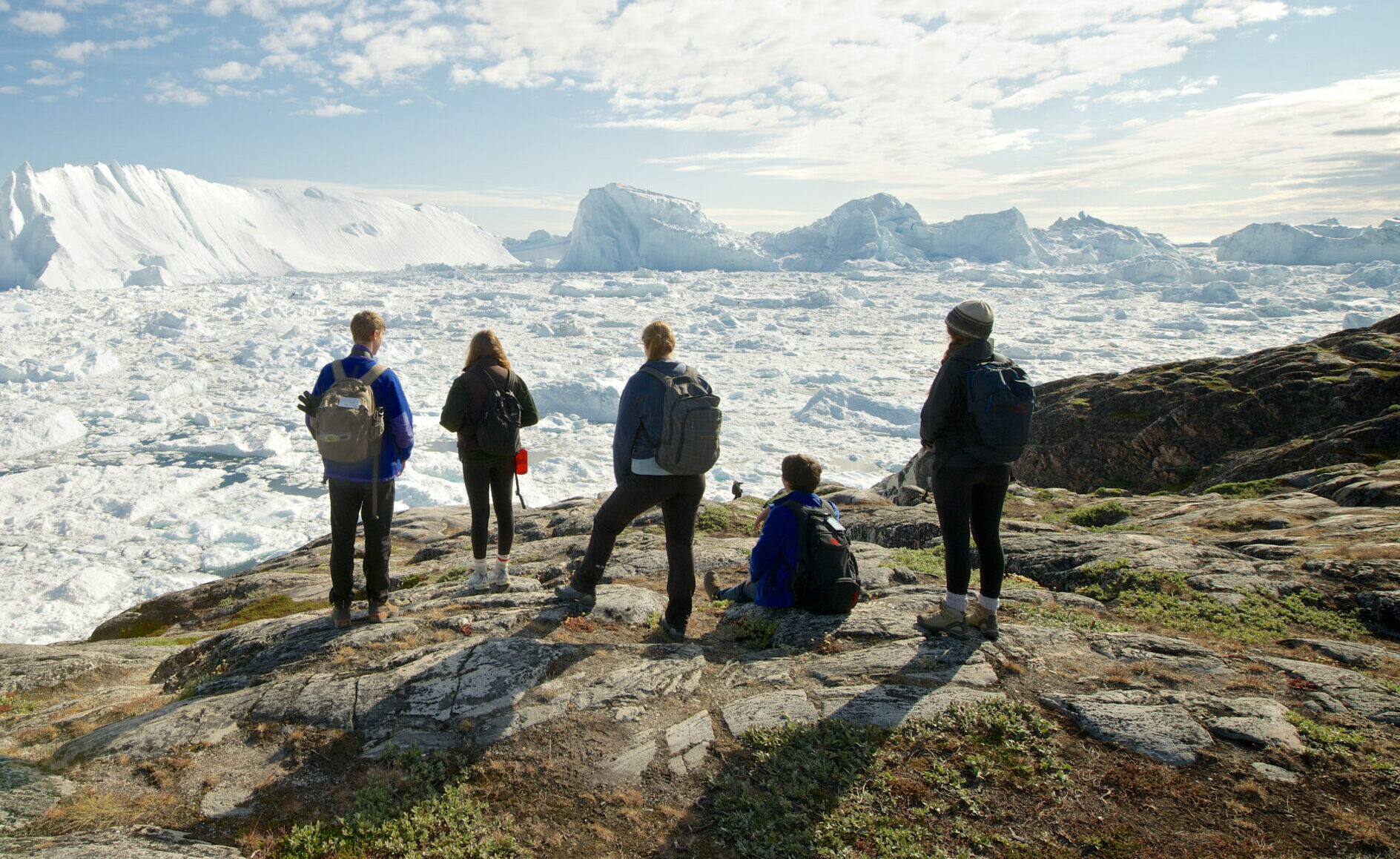The Innu Nation Uinipekᵁ Ocean Expedition: Leg 2 Update
Leg 1 finished with full smiles and hearts as participants headed home to share their experiences with family and friends. New participants came aboard the Polar Prince curious about the adventure to come and it didn’t take long for us to get right into laughter. The ship orientation and safety briefing is important and serious, but it’s hard not to have a good time when you try on the immersion suits as the photos show.

And now leg 2 is rolling. It’s a special leg of the Innu Nation Uinipeku Ocean Expedition as it spans the two Innu marine areas, Sheshashiu and Natuashish. We have new participants for the next week but the mission is the same – continue to increase the knowledge and understanding of Innu coastal and marine environments, alongside providing hands-on experiences in science, mariner skills, storytelling, and more for Innu youth. This group of participants is also a special one as it is an all-women group. They have named themselves Tshinanu Shkueut, translating to “All Innu Women”.
Over the first half of this leg, we’ve had the opportunity to do all sorts of science research, on and off ship. Regina Wells from the Canadian Wildlife Service joined us in Northwest River and has jumped right into teaching participants about the seabirds we are seeing. Regina keeps us on our toes, literally, teaching us dance moves to help us remember the different bird species! Day 2 took us past the Herring Islands and birds swarmed the back of the ship as we all tried to identify them as best we could. Everyone was excited to see razorbills, puffins, murres, and kittiwakes.

Other science has included research by the Department of Fisheries and Oceans including using CTDs to test the water’s salinity, temperature, and depth, sending out baited cameras to see what life is on the seafloor, and taking water samples at several depths. Some of the data collection is being done from Zodiacs, some from shore, and from the ship when we go out into deeper offshore waters of the Sheshatshiu marine zone. In the deep water, the DFO team also used a drop camera to record the seafloor and we were able to watch the footage to see what’s way down there.
Another research project from the Department of Fisheries and Oceans is using ‘drifters’ to study Ocean Currents. Many countries have deployed drifters around the world’s ocean to collect this data, but the Labrador Coast is lacking data. Our team helped change this as we deployed six drifters, three different types, out to sea late one evening. Language lessons and science mixed and mingled out on deck as participants helped name each drifter. Names included Kashkun (fog), Aiatashten (moves in the wind), Uinipeku (ocean), Pishum (sun), Anisheniu (angel), and Anielo (Ariel).

Ernest Hynes and Mark Ballah from the Canadian Hydrographic Service (CHS) are on board this expedition with the mission to update charts in the low-impact shipping corridors of Labrador. These areas haven’t been charted before with this multi-beam technology so this is an awesome partnership that allows for the surveying to be completed while being a part of this incredible Innu Nation expedition. The bulk of the survey happens at night while we are sleeping and the ship does transects of specific sites, however, the CHS team has been finding lots of opportunities to engage the youth in their surveying process in the daytime as well.
The dive team from the Canadian Museum of Nature and the Huntsman Marine Science Centre continued to complete several dives in the Sheshatshiu marine zone, including one where the water temperature measured -1.8 degrees Celsius! They’ve really enjoyed their time under the surface and it’s been well worth the cold as they have collected numerous creatures for the biodiversity survey, as well as lots of seaweed and kelp. The Innu youth help the divers press the kelp and take small samples for DNA analysis. They also brought up more urchins and we had an urchin feast out on deck. The ROV descends at each location to different depths to provide more supporting data to the dive work. Youth participants have tried their hand at piloting the ROV and have learned a lot about the work done with ROVs. Do we have future ROV pilots on board?

There have been lots of opportunities to learn some marine skills as well. Around the ship, the Tshinanu Shkueut group have been up on the bridge steering the ship, helping with bird surveying, and down in the engine room with the Chief Engineer. They’ve also been able to take turns driving Zodiacs. The team on board is amazing and it’s awesome to have such incredible women as scientists, Zodiac drivers, and deckhands working with these awesome young women from Innu Nation.
Stay tuned for the second half of this leg in the Natuashish Marine Zone!
View the full photo gallery here.





